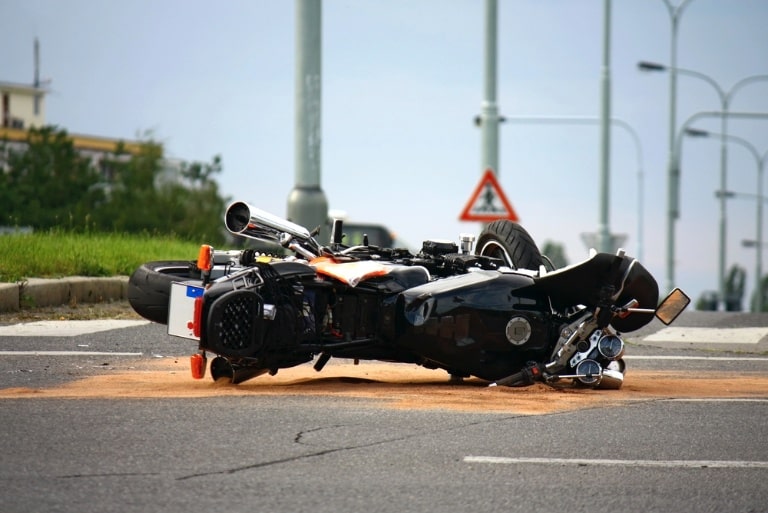Driver Negligence That Commonly Causes Motorcycle Accidents

Motorcycles symbolize freedom and independence, but riding also comes with serious risks. Unlike drivers inside cars who benefit from airbags, seatbelts, and protective frames, motorcyclists are directly exposed to the full force of a crash. When drivers fail to exercise caution, riders often pay the price with life-altering injuries and overwhelming financial burdens.
Many motorcycle accidents can be traced back to negligence. Careless or reckless behaviors behind the wheel frequently cause collisions that could have been avoided. Victims navigating motorcycle accident injuries cases need to understand the role negligence plays in crashes, as well as the steps required to pursue justice and compensation.
Distracted Driving: A Growing Hazard
Distracted driving is one of the leading causes of crashes today. With the rise of smartphones, drivers are more likely to take their eyes off the road to text, scroll through apps, or use navigation tools. Even seemingly harmless distractions—adjusting the radio, reaching for food, or engaging in lively conversations—pull focus away from traffic.
Motorcycles are already harder to see than larger vehicles. When drivers divide their attention, the risk of overlooking a rider increases dramatically. A momentary lapse can result in rear-end collisions, side swipes, or intersection crashes that leave motorcyclists with devastating injuries.
Speeding and Aggressive Driving
Speeding magnifies the danger on the road. A vehicle traveling too fast shortens the driver’s reaction time and reduces their ability to stop safely. For motorcyclists, a collision at high speed almost always results in catastrophic outcomes, including traumatic brain injuries, spinal cord damage, or fatalities.
Reckless behaviors like weaving through lanes, tailgating, or ignoring traffic signals compound the risk. Motorcycles require extra visibility and space, but aggressive drivers often disregard these needs. Their negligence leaves riders vulnerable to crashes they have no chance to avoid.
Failure to Yield at Intersections
Intersections remain one of the most dangerous places for motorcyclists. A frequent scenario involves a driver turning left in front of an oncoming motorcycle. Drivers often misjudge the bike’s distance and speed or fail to notice it altogether, assuming they can safely complete the turn.
For riders, the margin of error is small. A sudden left-hand turn often leaves no time to brake or swerve, causing direct collisions that can throw the rider onto the pavement or into oncoming traffic. These preventable crashes highlight the importance of vigilance at intersections.
Unsafe Lane Changes and Blind Spots
Lane-change accidents are another common result of negligence. Motorcycles fit into a car’s blind spot more easily than larger vehicles. Drivers who fail to check mirrors or blind spots before merging often sideswipe unsuspecting riders. Failing to use turn signals further increases the danger, giving motorcyclists no warning of a lane shift.
Even when riders anticipate these risks, evasive maneuvers can be dangerous. Swerving abruptly or braking hard to avoid a negligent lane change can cause riders to lose control, sometimes resulting in multi-vehicle crashes. This underscores the need for drivers to practice constant awareness.
Impaired Driving and Its Severe Consequences
Driving under the influence of alcohol or drugs is very dangerous. It puts everyone at risk, especially motorcyclists who lack vehicle protection. The consequences can be devastating.
- Slower reflexes – Alcohol and drugs impair reaction times, making it harder for drivers to avoid sudden hazards.
- Poor judgment – Intoxication leads to reckless choices, such as speeding, unsafe lane changes, or ignoring traffic signals.
- Increased crash severity – Collisions with impaired drivers often result in catastrophic injuries for motorcyclists.
- Permanent disabilities – Victims may suffer spinal cord injuries, traumatic brain injuries, or amputations requiring lifelong care.
- Emotional trauma – Survivors frequently experience depression, anxiety, or post-traumatic stress after such crashes.
- Financial hardship – Ongoing medical bills, rehabilitation costs, and lost wages create lasting economic strain.
- Legal accountability – DUI cases demand not only compensation for victims but also accountability to deter dangerous behavior.
- Community safety concerns – Each impaired driving crash underscores the broader risks to all road users.
These cases highlight the urgent need for both justice and prevention, ensuring victims receive fair recovery while discouraging others from endangering lives through impaired driving.
Following Too Closely: Tailgating Risks
Tailgating is a careless habit that places motorcyclists in extreme danger. Unlike cars, motorcycles can stop more quickly and require less distance to come to a halt. A driver who follows too closely risks striking a rider if traffic slows suddenly.
Rear-end crashes that might be minor between two cars often prove deadly when a motorcycle is involved. Riders can be thrown from their bikes, crushed, or pushed into other lanes of traffic. Maintaining safe distances is a simple yet crucial responsibility that negligent drivers too often ignore.
Neglecting Weather and Road Conditions
Responsible drivers adjust their behavior to match conditions, but many do not. Rain, fog, or icy pavement requires slower speeds and greater following distances. Potholes, gravel, or debris create additional hazards, particularly for motorcycles, which are less stable on uneven surfaces.
When drivers ignore these realities and continue operating at normal speeds, they put motorcyclists at high risk. A car sliding on slick pavement or swerving to avoid debris can easily collide with a rider. Proper caution during adverse conditions is not optional—it’s essential.
Holding Negligent Drivers Responsible
Motorcycle crashes often change lives in an instant. Victims may face months of hospitalization, years of therapy, and permanent physical limitations. Recognizing the common forms of driver negligence is vital for building strong legal claims. Proving that a driver acted carelessly strengthens a victim’s case and ensures accountability.
Legal claims can secure compensation for medical treatment, lost wages, rehabilitation, and emotional suffering. Beyond financial recovery, holding negligent drivers accountable also promotes safer roads. Each successful claim serves as a reminder that carelessness has serious consequences.
Why Awareness and Action Matter
Every rider deserves to share the road safely, yet negligence continues to put motorcyclists at risk. By understanding the behaviors that lead to collisions, both drivers and riders can take steps to reduce accidents. Awareness encourages safer driving habits, while legal action ensures justice for those harmed.
For victims, pursuing accountability is about more than money—it is about reclaiming control and stability after a devastating event. With the right support, motorcycle accident victims can secure the resources they need to heal and, at the same time, contribute to safer communities for everyone on the road.




